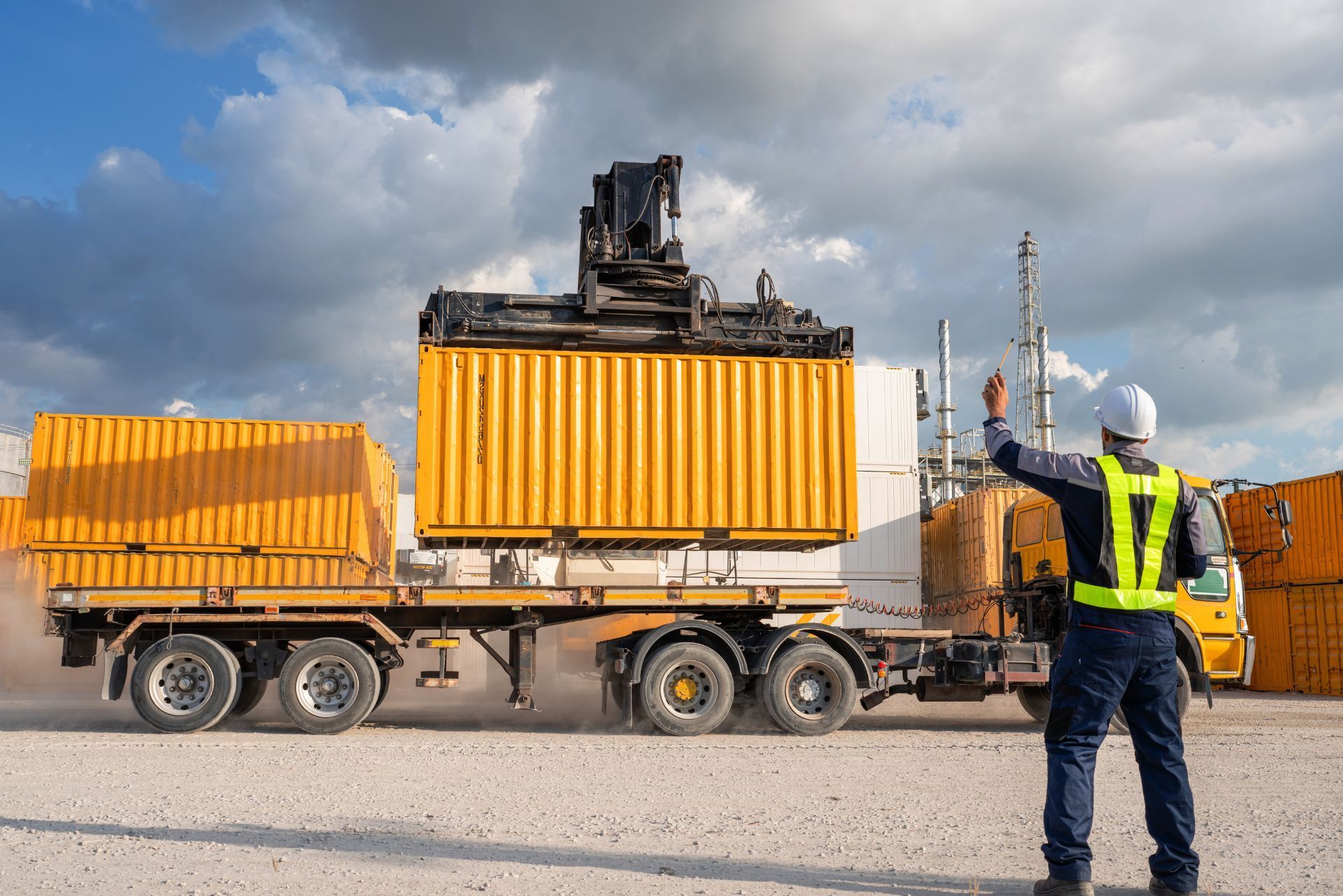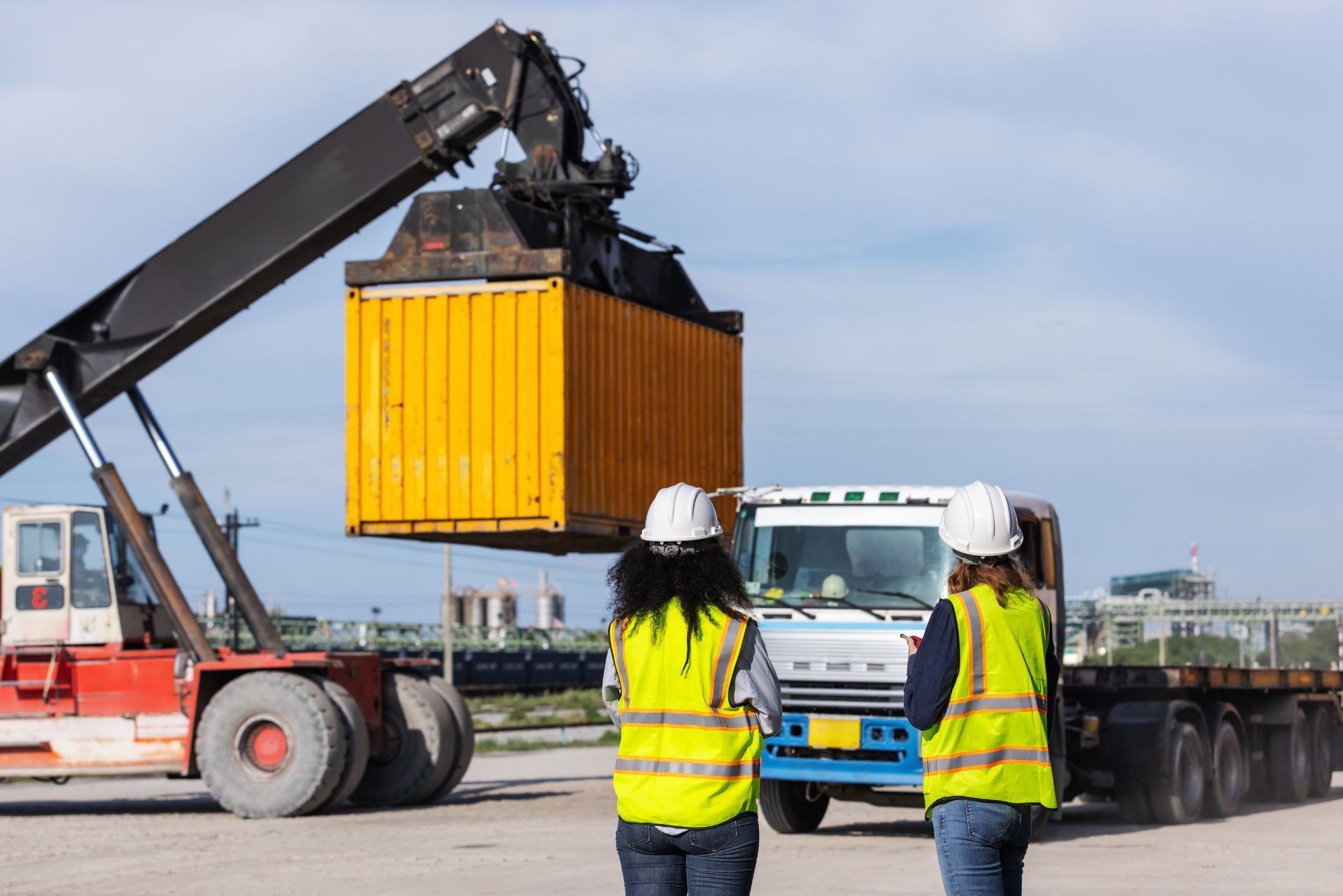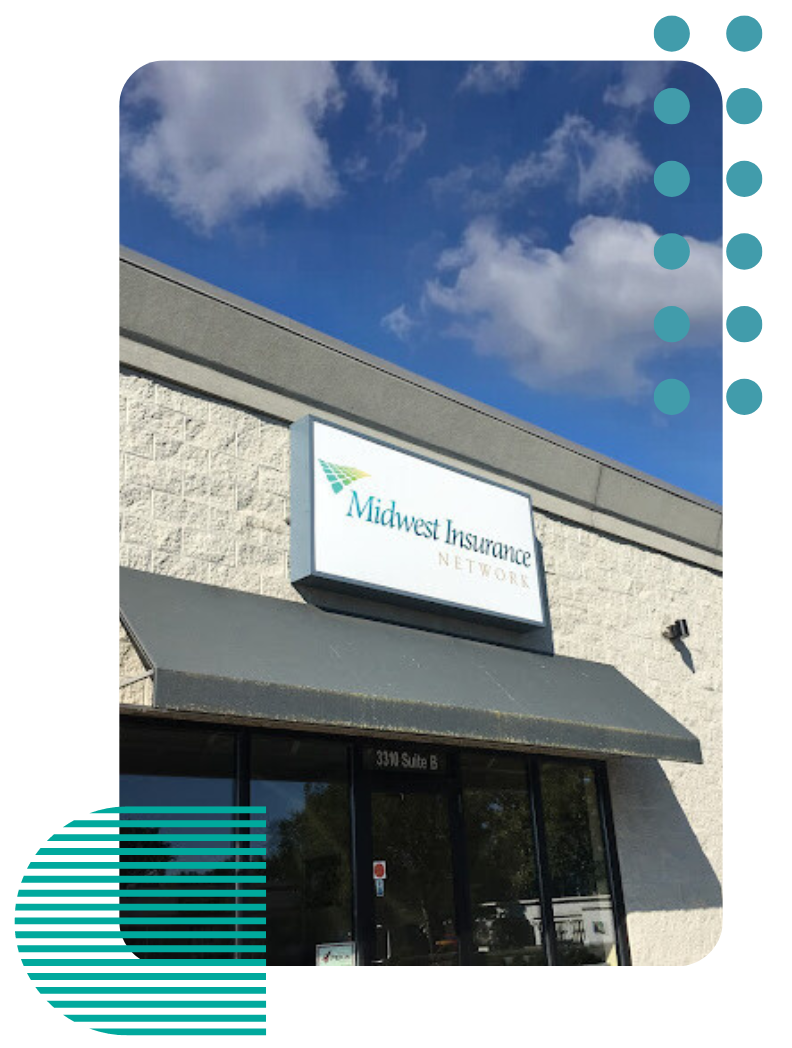Ohio Motor Truck Cargo & Non-Trucking Liability Insurance

See How We're Different
or call us: 419-720-5825
Top 3 Recommended Policies
Index
Contact Us
Phone
agency@midwest-insure.com
Location
Northwood, OH
3310 Woodville Road, Suite D
Northwood, OH 43619
Elmore, OH
361 Rice Street
Elmore, OH 43416
The trucking industry is a vital backbone of Ohio’s economy, responsible for moving a significant portion of goods across the state and beyond. However, with the increasing risks and complexities in the transportation sector, understanding the nuances of insurance coverage is essential for trucking businesses, especially motor carriers and owner-operators. Two critical types of insurance that often cause confusion are Motor Truck Cargo Insurance and Non-Trucking Liability Insurance.
This comprehensive guide will explore what these coverages entail, why they are important for Ohio trucking companies, and how recent industry trends and challenges impact insurance decisions. As the trucking landscape evolves, staying informed about insurance options can protect your business from financial pitfalls and enhance operational stability.
For context on the trucking industry's economic significance and challenges, the sector generates $941 billion in gross freight revenues and employs 8.4 million workers nationwide, transporting 73% of all U.S. freight by weight
according to Insurance Journal.
Understanding Motor Truck Cargo Insurance in Ohio
Motor Truck Cargo Insurance is designed to protect the cargo a trucking company transports. This coverage is essential because it insures the goods against damage or loss while in transit, whether due to accidents, theft, or other unforeseen events.
For Ohio motor carriers, this insurance is particularly critical given the state’s role as a transportation hub connecting the Midwest to the East Coast. Without adequate cargo insurance, trucking companies face potentially devastating financial losses if cargo is damaged or stolen during delivery. The intricate network of highways and interstates in Ohio facilitates a high volume of freight movement, making it imperative for carriers to safeguard their operations with comprehensive insurance coverage.
What Does Motor Truck Cargo Insurance Cover?
Typically, this policy covers the value of the freight being hauled, including goods damaged by collision, fire, weather events, or theft. It is important to note that cargo insurance generally does not cover delays or lost profits resulting from cargo damage, only the physical loss or damage itself. This distinction is crucial for trucking companies to understand, as it shapes their risk management strategies and financial planning.
Coverage limits vary based on the type of cargo and the carrier’s needs. For example, carriers hauling high-value electronics or pharmaceuticals may require higher limits compared to those transporting less valuable goods. Additionally, some policies may offer specialized coverage options, such as refrigerated cargo insurance for perishable items, which can provide extra peace of mind for carriers dealing with sensitive shipments.
Why Ohio Trucking Companies Need Cargo Insurance
Given the rising frequency of trucking accidents and cargo theft, having robust cargo insurance is a must. The National Safety Council has reported a concerning 49% increase in fatal crashes involving large trucks between 2011 and 2021, alongside a 15% rise in injury-related crashes from 2016 to 2021 according to the IOA Focus Report. These statistics highlight the real risks cargo faces on the road. Furthermore, the economic impact of these incidents can ripple through supply chains, affecting not just the trucking companies but also manufacturers and retailers who rely on timely deliveries.
Moreover, with the average trucking accident litigation award reaching over $27 million in some cases, the financial stakes are incredibly high
as reported by the U.S. Chamber of Commerce’s Institute of Legal Reform. Cargo insurance helps mitigate the risk of losing valuable freight and facing costly claims. In addition to protecting against financial loss, having cargo insurance can enhance a trucking company’s credibility with clients, as it demonstrates a commitment to safeguarding their goods during transit. This trust can be a significant competitive advantage in a crowded marketplace, where reliability and security are paramount concerns for shippers.

Non-Trucking Liability Insurance Explained
Non-Trucking Liability Insurance, sometimes called "bobtail insurance," is a specialized coverage that protects owner-operators and trucking companies when their vehicles are being used for non-business purposes. For example, this insurance applies when the truck is being driven without a trailer or is off-duty and not hauling freight.
This coverage is crucial because the primary commercial auto insurance policy typically does not cover liability during non-business use. Without non-trucking liability insurance, drivers could be personally responsible for damages or injuries caused during these periods. This gap in coverage can lead to significant financial burdens, especially for independent operators who may not have the resources to cover unexpected liabilities.
Who Needs Non-Trucking Liability Insurance?
Owner-operators and small trucking firms in Ohio often rely on this insurance. It’s especially relevant for drivers who use their trucks for personal errands or move their vehicles between jobs without hauling cargo. The flexibility of being able to use their trucks for personal purposes without the worry of liability claims is a significant advantage for many drivers.
Given that small carriers paid an average of $0.102 per mile for insurance in 2021 — higher than large carriers — finding cost-effective coverage options is a priority according to the IOA Focus Report. Non-trucking liability insurance can provide affordable protection during these off-duty times. Moreover, as the trucking industry continues to evolve with new regulations and market demands, having this type of insurance can also enhance a driver's credibility and professionalism, making them more appealing to potential clients and partners.
Coverage and Benefits
This insurance covers bodily injury and property damage liability when the truck is not under dispatch. It does not cover physical damage to the truck itself, which requires separate coverage. The policy helps protect drivers from lawsuits and claims that could arise if they cause an accident while the truck is being used for personal reasons. Additionally, many policies offer options for higher liability limits, allowing drivers to customize their coverage based on their unique needs and risk factors.
Furthermore, non-trucking liability insurance can also serve as a safety net during transitional periods, such as when a driver is switching between different contracts or waiting for a new load. In these instances, the peace of mind that comes from knowing they are protected can allow drivers to focus on their work without the constant worry of potential liabilities lurking during their downtime. This aspect of coverage is particularly important in an industry where the unexpected can happen at any moment, and being prepared can make all the difference.
Challenges Facing Ohio Trucking Insurance Buyers
The trucking insurance market has faced significant challenges over the past few years, impacting premiums and availability. Insurers have reported combined loss ratios exceeding 100%, meaning they are paying out more in claims than they collect in premiums. Steve Libertore of National Risk Management Services noted a 111% combined ratio for commercial auto policies over the last two years, signaling a hard market for trucking insurance according to Overdrive.
This hard market has led to higher premiums and stricter underwriting standards, especially for smaller carriers and owner-operators who often face the brunt of increased costs. In fact, in 2023, about 10% of U.S. trucking firms ceased operations, partly due to rising insurance expenses and operational challenges as reported by Insurance Journal.
Impact of New Entrants and Market Competition
Despite these challenges, new players like GEICO entering the commercial trucking insurance market in 2025 have introduced competitive premiums, particularly benefiting small trucking businesses. GEICO’s approach offers lower and more realistic rates, potentially easing the financial burden on owner-operators and small motor carriers according to ExpeditersOnline.
This increased competition may help Ohio trucking companies find more affordable coverage options, though it remains crucial to carefully evaluate policies to ensure adequate protection. Additionally, the introduction of technology-driven solutions in the insurance sector is transforming how risks are assessed and managed. Insurers are increasingly utilizing telematics and data analytics to gain insights into driving behaviors, vehicle conditions, and route efficiencies, which can lead to more tailored insurance products and potentially lower premiums for safe operators.
Moreover, the regulatory landscape is also evolving, with state and federal initiatives aimed at improving safety standards and reducing accident rates. These regulations not only impact insurance costs but also encourage trucking companies to invest in safety training and advanced technologies, which can further mitigate risks. As the market adapts to these changes, Ohio trucking firms must stay informed about both insurance options and regulatory requirements to navigate this challenging environment effectively.
Emerging Trends: The Shift Toward Zero-Emission Trucks and Insurance Implications
Ohio’s trucking industry, like the rest of the nation, is beginning to transition toward zero-emission trucks as part of broader environmental goals. While this shift promises long-term benefits, it also introduces new insurance challenges.
Michael Soller, spokesman for the California Department of Insurance, recently highlighted that insurers are still adapting to cover emerging technologies like electric and hydrogen trucks, which may face hurdles in obtaining affordable and comprehensive insurance according to Transport Topics.
For Ohio motor carriers, this means that while zero-emission trucks present exciting opportunities, insurance buyers should stay informed about evolving policy terms and potential coverage gaps related to new vehicle technologies.
As the industry shifts, the infrastructure to support zero-emission vehicles is also developing rapidly. Charging stations for electric trucks are being installed along major highways, and hydrogen refueling stations are becoming more prevalent in strategic locations. This expansion not only facilitates the adoption of these vehicles but also raises questions about liability and risk management in the event of accidents or breakdowns at these new facilities. Insurers will need to consider these factors when crafting policies to ensure comprehensive coverage for both carriers and the infrastructure that supports them.
Moreover, the transition to zero-emission trucks is not just a technological shift; it also reflects changing consumer preferences and regulatory pressures. Companies that adopt greener practices may find themselves at a competitive advantage, appealing to environmentally conscious customers and meeting stricter emissions regulations. This trend could potentially lead to a reevaluation of risk assessments by insurers, as businesses that prioritize sustainability may also invest more in safety and operational efficiency, thereby reducing their overall risk profile. Understanding these dynamics will be crucial for insurance providers as they navigate the complexities of this evolving market.

Key Takeaways for Ohio Trucking Businesses
Understanding and securing the right insurance coverage is vital for Ohio trucking companies to manage risks effectively. Motor Truck Cargo Insurance protects valuable freight from damage or loss, while Non-Trucking Liability Insurance safeguards drivers during non-business use of their vehicles. These insurance types not only provide peace of mind but also ensure that trucking companies can continue to operate without the looming threat of financial ruin due to unforeseen incidents.
Given the current insurance market conditions—with rising premiums, increased accident rates, and evolving industry trends—careful planning and working with knowledgeable insurance providers can help trucking businesses find the right balance between cost and coverage. It is essential for companies to regularly review their policies and adjust their coverage as their operations grow or change. Engaging with an insurance broker who specializes in the trucking industry can offer invaluable insights into the nuances of various policies and help businesses navigate complex claims processes when necessary.
Ohio’s trucking operators should also monitor ongoing developments such as new market entrants offering competitive rates and the transition to zero-emission vehicles, which may influence insurance options in the near future. As the industry shifts towards sustainability, understanding the implications of electric and hybrid trucks on insurance coverage will be crucial. These vehicles may come with unique risks and benefits that could alter premium calculations and liability considerations, making it imperative for operators to stay ahead of these trends.
By staying informed and proactive, Ohio motor carriers can protect their assets, comply with regulations, and maintain operational resilience in a challenging but essential industry. Additionally, participating in industry associations and attending seminars can provide trucking businesses with networking opportunities and access to the latest research and best practices in risk management. This can further enhance their ability to adapt to changes in the market and ensure long-term success in a competitive landscape.



